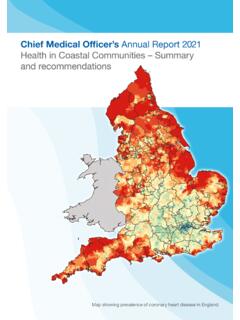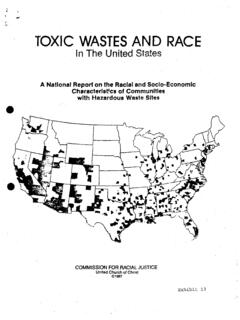Transcription of Professional Learning Communities and Communities of ...
1 Professional Learning Communities and Communities of Practice: A Comparison of Models, Literature Review Selena S.
2 Blankenship and Wendy Ruona University of Georgia Due to the growing interest of school leaders in implementing Learning Communities as a way to build capacity for and sustain change, a better understanding of how the concepts of Professional Learning Communities (PLCs) and Communities of practice (CoPs) are related will aid educators in their quest to implement these concepts. This paper compares models of PLCs and CoPs and explores knowledge development and sharing within both concepts. Implications for both scholars and HRD practitioners are included. Keywords: Learning Communities , Communities of Practice, School Systems As school systems struggle to meet the mandates of federal legislation to increase student achievement, school leaders are exploring ways to build capacity for change and to sustain improvement efforts.
3 Since the early 1990 s, there have been many concepts discussed in the literature that may help schools succeed in this endeavor. More recently, the concepts of Professional Learning Communities (PLCs) and Communities of practice (CoPs) have received increased attention from school leaders looking for ways to foster school improvement; however there has been a lack of clarity among administrators as to how these concepts are defined and operationalized (Voulalas & Sharpe, 2005). If schools intend to become more effective, changes must be implemented and sustained, and that demands that administrators and HRD professionals in schools find ways for teachers to establish collegial relationships, share knowledge and collaborate (Drago-Severson & Pinto, 2006).
4 Problem Statement For the past decade, much has been written in education about the creation of Professional Learning Communities as a vehicle for establishing collegial relationships and for building capacity for change within a school (Dufour & Eaker, 1998; Fullen, 2004; Hord, 2004; Senge, 2000). These scholars each posit that Professional Learning Communities are a way for schools to reduce isolation and learn together to create sustainable change. While some schools have had measurable success in working toward this vision (Hord, 2004; Dufour & Eaker 1998; Morrisey, 2000; Murphy & Lick, 2004), some schools across north America as well as in other parts of the world have found the vision difficult to realize because of conditions existing both internally and externally related to culture, organizational structure and leadership (Caldwell & Johnston, 2001; Scribner, Cockerell, Cockerell & Valentine, 1999; Silins, Zarins & Mulford, 2002; Supovitz, 2002).
5 As Professional Learning Communities and Communities of practice continue to be explored as ways to build capacity in schools to impact student achievement, it becomes increasingly important to understand the similarities and differences between PLCs and CoPs as these two concepts seem to hone in on two separate, but critically related, foci of Learning and action (Revans, 1977). As Chindgren and Wiswell (2006) point out, both scholars and practitioners have used different labels to describe the same refer to different typologies (pg. 1). Understanding the similarities between these models can help HRD professionals and school leaders see beyond the fad of any one model to the insights and Learning that hold great potential for sustained Learning Communities in schools.
6 And, understanding the differences between the models more deeply will help these same professionals make more informed decisions as to what aspects they should and should not incorporate into their customized set of interventions. It is this deeper, and more nuanced, understanding that will best enable HRD professionals working in the school system to facilitate and support the type of Learning and sharing necessary for organizational improvement. Questions Guiding the Literature Review The following questions guide the literature review: 1) How are Professional Learning Communities and Communities of practice similar, different, and related? 2) How is knowledge development and sharing focused on within these concepts? Copyright 2007 Selena S.
7 Blankenship & Wendy E. A. Ruona
8 Methodology To answer the research questions, we reviewed multiple articles from a dozen national and international scholarly journals in both business and education. We used both a search of internet databases as well as a search of university library resources, utilizing key terms including Professional Learning Communities , Communities of practice, organizational Learning , knowledge development, and knowledge management. Search results were further refined through the use of additional search terms such as defining, school improvement, and education. Additionally, we relied on information from seminal works written about the topics of Professional Learning Communities , Learning organizations, and Communities of practice, as well as additional books and monographs related to the topics.
9 Once the literature was reviewed, we compared the characteristics of the different models of Professional Learning Communities and Communities of practice to explore similarities and differences. We then analyzed the role of knowledge sharing in the models and drew conclusions based on that analysis. This review is not meant to be comprehensive as much as it was designed to explore and elucidate content related specifically to the research questions. In addition, one limitation is that we drew heavily on sources from the field of education, and thus may have excluded other pertinent documents. Characteristics of Professional Learning Communities and Communities of Practice In the following section, three models of Professional Learning commutes (PLCs) and three models of Communities of practice (CoPs) are briefly introduced in order to provide the reader with a basic understanding that will lead into the later discussion in this paper.
10 Dufour and Eaker (1998) Dufour and Eaker (1998) are the impetus behind Learning organizations being referred to as Professional Learning Communities in the field of education. In their book, the authors make the distinction that the term organization connotes efficiency and structure, whereas community connotes individuals linked by common interest. Dufour and Eaker define a Professional Learning community as educators [creating] an environment that fosters mutual cooperation, emotional support, and personal growth as they work together to achieve what they cannot accomplish alone (p. xii). The Professional Learning community that Dufour and Eaker envision has six characteristics: Shared mission, vision, and values Collective inquiry Collaborative teams Action orientation and experimentation Continuous improvement Results orientation The Dufour and Eaker model of Professional Learning Communities is a framework from which a school faculty can begin to shift the culture of their school in order to build capacity for implementing and sustaining change.
















